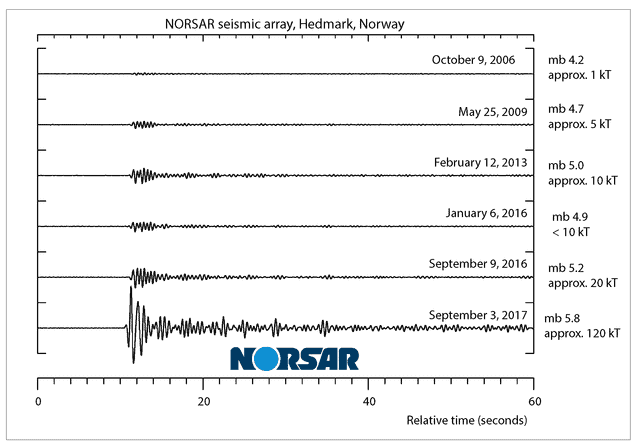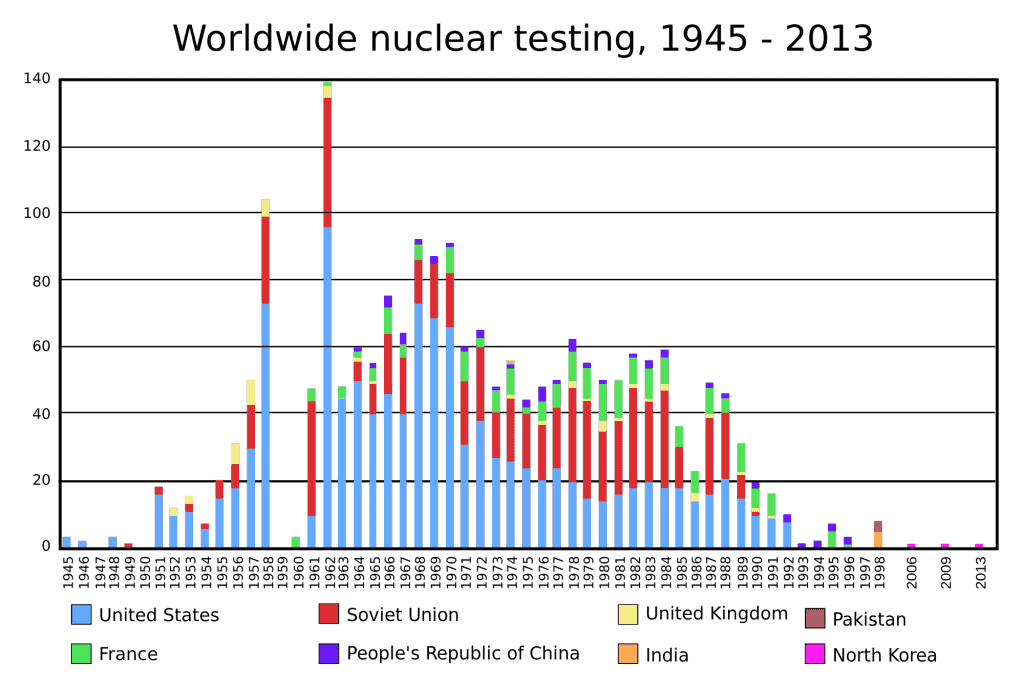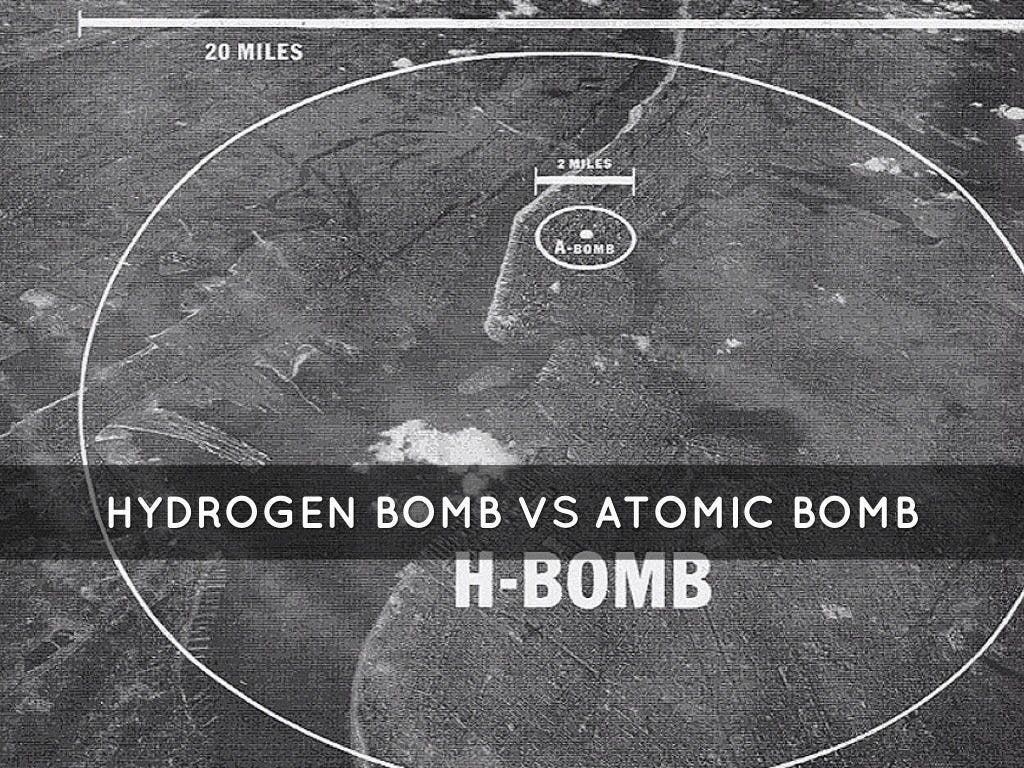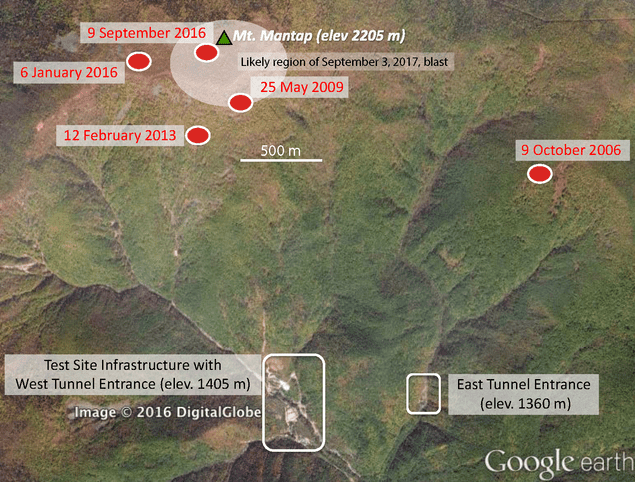The entire world is abuzz with news that North Korea is testing nuclear weapons. But how can we be sure what’s going on? Well, science has an elegant solution to that problem — and it has a lot to do with earthquakes.

Earthquakes vs bombs
Every time an earthquake happens, thousands of devices all around the world record it. These are the seismographs, and they measure movements associated with earthquakes. This global network has proven instrumental for a number of reasons.
For starters, we can know the location of all earthquakes (to some degree of certainty). We’ve long deduced the speed of seismic waves, and by calculating the arrival time of these waves at different places across the Earth’s surface, we can know where an earthquake happened and triangulate the epicenter. This also helped us greatly expand our understanding of the planet’s subsurface, and earthquakes allow us to “see” way deeper than we could ever hope otherwise.
We can also tell a lot about the earthquake intensity — its energy. The Richter magnitude (the most commonly used scale) is basically determined from the logarithm of the amplitude of waves recorded by seismographs. So an earthquake with a magnitude of 7 is ten times stronger than that with a magnitude of 6. But we can go even deeper into the mechanism of the earthquake: we can study its source, through the waves we see.
All earthquakes have three types of waves: P waves (primary), S waves (secondary), and surface wave (Love and Rayleigh waves). This is where it really gets interesting.

Although surface waves are typically the most destructive, P waves are the fastest. These P waves are essentially alternative extensions and compressions of matter along a trajectory — think of someone playing the accordion. Now, imagine an earthquake happening. Some part of the ground snaps. When it triggers, it produces these waves, and if you plot P waves over a stereographic projection, you end up with a so-called beachball diagram. These diagrams show that for the first movement, some directions are extensions, while the perpendicular directions are contractions. It’s not the easiest thing to wrap your head around, but let’s just say that for every earthquake, P waves start as extensions over half of all possible directions, and contractions in the other half.

Whenever an underground explosion happens, it only produces contractions. So for an underground explosion, you wouldn’t end up with a beachball diagram that’s half white and half black — you’d end up with one that’s all black. In other words, the pattern of energy in a bomb-related earthquake is completely different than that of a natural earthquake.
“As the bomb is detonating, it’s compressing the rock immediately adjacent to it, and that propagates out to the recording stations” as P waves, said Douglas Dreger, a seismologist at the University of California, Berkeley.
The relative amplitude of waves can also be an indicator of an explosion and not a natural earthquake. The bottom line is, you can’t really fake the seismic signature of an underground explosion — people will be able to tell whether or not you tested a bomb, and approximately how strong it is.
[Also read our previous article on this topic: Did North Korea actually test a bomb? Science has the answer]
Why underground?
While we’re discussing detecting underground explosions, it makes sense to ask the question — why underground? Why not just test it in the air, or underwater? Well, if you want to hide something, underground is just your best bet. People will still know you did something, but you have a decent chance to at least hide some information.
Air does very little to muffle the sound of an explosion. Furthermore, explosions also generate infrasonic (long wavelength, low frequency) waves that are very easy to pick up on detectors all around the world. Radiation might also be detected. So if you want to carry an experiment, air does basically nothing to hide it.
Water is a bit better. The energy of the waves dissipates more than in air, but since there are no natural sources that can produce such earthquakes underwater, you’d again be creating an easily detectable smoking gun.
By going underground, you’re at least putting a mask on your smoking gun. Vigilant observers will still be able to see what you’re doing, but at least you’ll be making it hard for them, and if you’re lucky, you might create some uncertainty around the energy of the bomb.
Routine measurements

This is not really groundbreaking science — it’s been known for decades. It’s this technology that allowed the implementation of the Treaty on the Non-Proliferation of Nuclear Weapons, commonly known as the Non-Proliferation Treaty. According to the treaty, no nation is allowed to conduct nuclear tests, but there’s not much point in having such a deal if you can’t verify it, is there?
So most nations on Earth have at least some form of seismological monitoring which not only studies earthquakes but also detects such explosions. We can’t really know what kind of a bomb it is (was it really an H bomb?), but we can infer several things about it, with decent certainty.
The biggest question is, was it fusion or fission? Both bomb types release large quantities of energy from relatively small amounts of matter. However, the fundamental principle is different. Fission bombs use heavy elements such as uranium and plutonium and break them down into unstable isotopes when bombarded with neutrons. Meanwhile, fusion bombs take the opposite approach: they use light elements such as hydrogen and combine them into heavier elements such as helium, releasing even more energy in the process. The required energy is so great, that the only way we’ve figured out to make such a bomb is by surrounding it with a fission bomb to power it up.

So you can get an idea about the scale we’re talking, the first test of a fission (“atomic”) bomb released an amount of energy approximately equal to 20,000 tons of TN. The first thermonuclear (“hydrogen”) bomb test released energy approximately equal to 10 million tons of TNT.
North Korea’s tests

This leads us to North Korea’s tests. They claim to have tested a hydrogen bomb, but judging by the energy observed in the North Korean tests, there’s almost no way that’s true. If it were indeed an H bomb, it would be the most efficient fussion we’ve ever seen, something many researchers don’t even believe is possible. So right now, all the evidence is pointing towards a fission bomb, what’s often called an atomic bomb. It’s possible that they did assemble an H bomb, but for some reason, it failed, or that they’re just bluffing. Even an atomic bomb would likely be enough to completely wipe an average city, so this shouldn’t be treated lightly. In fact, few things are as frightening as a nuclear war.
So here’s what we know so far:
- North Korea is conducting underground tests of bombs. We know this through a study of seismic waves.
- They say that future tests will include an open air test.
- They say they have an H bomb, but evidence indicates that they’ve “only” exploded an atomic bomb.
- Even such an atomic could lead to gargantuan explosions and cause unprecedented damage.






